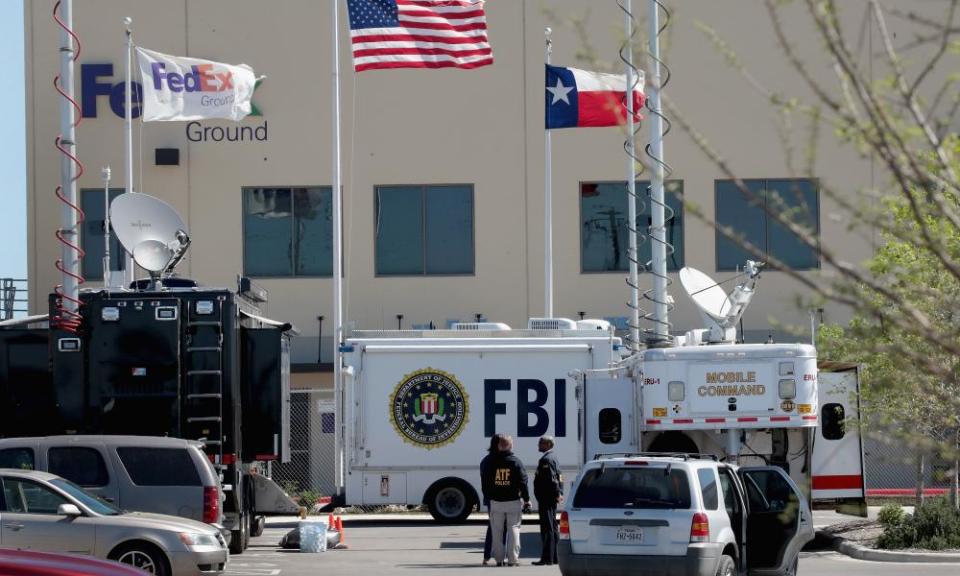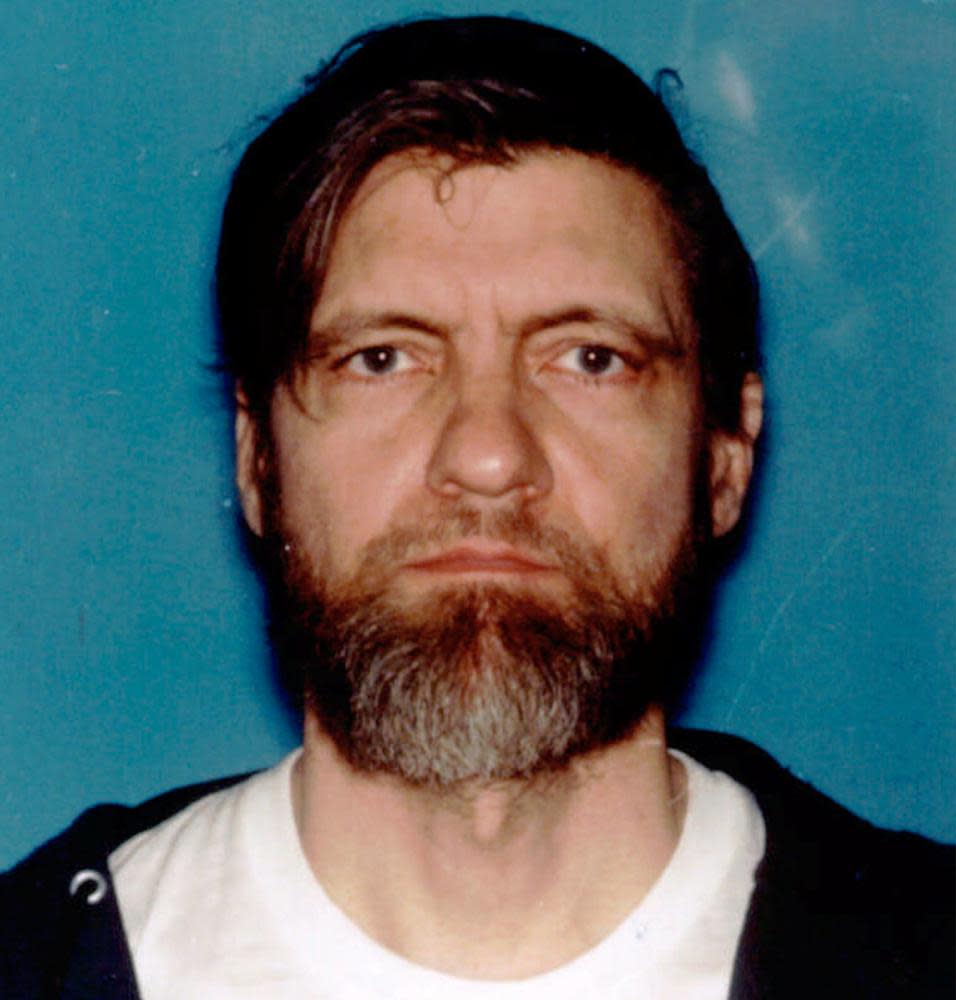Texas explosions are work of 'serial bomber' whose tactics are evolving, police say
Police say a package explosion at a FedEx facility near San Antonio is the latest in a series of blasts tormenting central Texas

A package destined for Austin exploded on a conveyor belt at a FedEx facility near San Antonio on Tuesday, the latest in a series of explosions tormenting central Texas.
Before dawn Tuesday, a bomb believed to contain nails and shrapnel went off in the sorting area of the distribution centre in Schertz, part of the San Antonio metro area, at about 12.30am. A woman reported ringing in her ears but no one else was hurt. Schertz is about 60 miles from Austin, where four devices have exploded in residential areas this month, killing two and injuring several.
Police believe the explosions are the work of a serial bomber whose tactics are evolving.
“It would be silly for us not to admit that we suspect it’s related,” Michelle Lee, an FBI agent, said of the FedEx detonation. The package was reportedly shipped from a FedEx store in Austin.
San Antonio police chief William McManus told reporters a second package bomb was found at the warehouse but did not detonate. A police spokesman later said the chief “misspoke” and there was “no secondary device”.
Police and the bomb squad also responded to a suspicious package call at another FedEx depot, this time next to Austin-Bergstrom International Airport.
The first three bombs were triggered by people handling packages left overnight on doorsteps and not sent via the postal service or a private company. A 39-year-old man died on 2 March, followed by a 17-year-old boy who was killed in his kitchen on 12 March. Later that morning a 75-year-old woman was seriously hurt.
The two who died were black, and the woman Hispanic, prompting investigators and community leaders to raise racial hatred as a possible motive. However, another explosion on Sunday complicated the theory that the victims were targeted.

This time, the location was not a majority African American or Hispanic neighbourhood east of the city but a mainly white area to the south-west. And instead of a package on a doorstep, the device was triggered by a thin, almost invisible roadside tripwire, adding a random element and a different bomb-making technique that police said indicates a high level of sophistication.
Two white men, aged 22 and 23, sustained serious injuries that are not thought to be life-threatening. At least one of the men had what looked like nails embedded in his knees. The affluent, leafy neighbourhood of Travis Country was locked down for much of Monday as police cordoned off streets and told residents to stay inside as local, state and federal investigators examined the scene.
Despite the deployment of hundreds of agents and $115,000 worth of rewards on offer for tips leading to an arrest, authorities appear clueless as to the identity and motive of the suspect or suspects.
The case has spurred memories of the Montana-based domestic terrorist Ted Kaczynski, the so-called Unabomber, who killed three people and injured 23 others with package bombs over 17 years, starting in 1978. He was not arrested until 1996.

Brian Manley, the interim Austin police chief, has appealed to the bomber to make contact. “We want to understand what brought you to this point and we want to listen to you,” he told reporters on Sunday.
More than 1,200 Austin residents have contacted police since the morning of 12 March to report suspicious packages, police said. In a sign of growing tension and a feeling that the bomber could strike anywhere in the city, a third of the calls came between 8am on Monday and 8am on Tuesday.
“I want to continue to remind our community to pay close attention to any suspicious device whether it be a package, a bag, a backpack or anything that looks out of place, do not approach it,” Manley said in a statement on Tuesday.
At the White House, Donald Trump said “sick people” were behind the bombings and called Austin “a great place, a tremendous place”.
Late on a warm and sunny Monday afternoon, Becky Vlasak had been among the Travis Country residents who ventured out for a walk, after the all-clear.
“We’ve been scanning for an unknown package and stuff like that already so now I think we’ll be even more worried about wires,” she told the Guardian. “It’s so random. He obviously, whoever it is, doesn’t care who you hurt, who trips over a wire – it could be a kid.”
Still, she felt optimistic that someone must know the killer’s identity and will tip off police.
“I think they will,” she said. “If nothing else, [for the] reward money.”
A further scare came Tuesday night when emergency teams rushed to another reported explosion in Austin, this one at a Goodwill store, but police and federal authorities said the blast wasn’t related to the other bombings.
Gary Davis, the president and CEO of Goodwill Texas, said the device was contained in a bag and detonated when a worker moved it. “We put all the donations we get in a big cardboard box. He pulled something out in a bag, completely normal, and the device went off,” Davis said.
He added: “In this town, if an incendiary device goes off, everybody just scatters and panics. We’re all on edge.”

